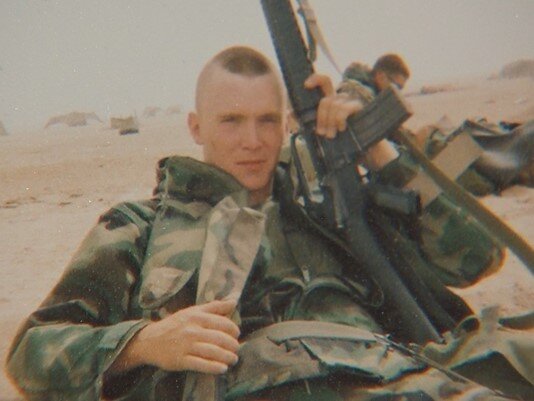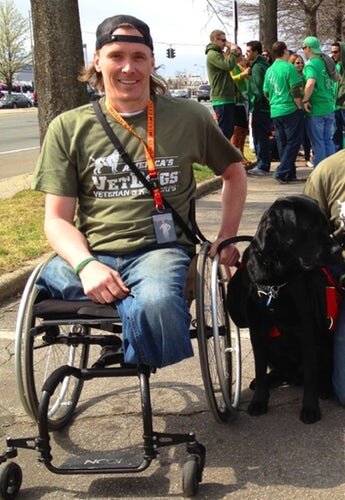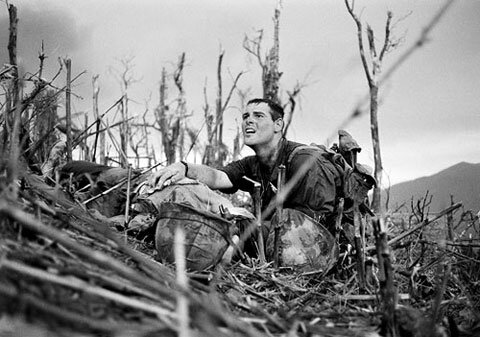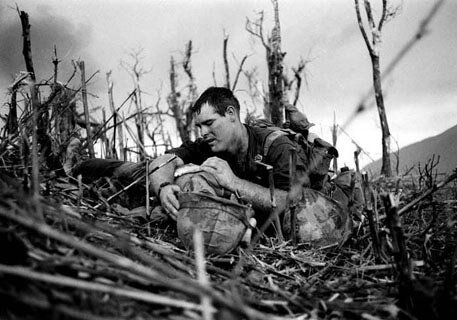The Rest of the Story: When Even Death Doesn't End the Struggle
Casey Owens was a decorated Marine who served the United States through two deployments. In September of 2004, barely a month into his second deployment in the Al Anbar Province of Iraq, the vehicle in which Owens was riding in en route to aid an injured Marine struck two anti-tank mines. The injuries to Owens’ legs were catastrophic. He was stabilized at a field hospital and then flown to Germany, where his left leg was amputated below the knee and his right amputated just above the knee. But this was only the beginning of Owen’s very long journey.
Upon his return to the United States, Owens received care for complications from his surgeries at Bethesda Naval Hospital in Maryland, Walter Reed Army Medical Center, and Brooke Army Medical Center in San Antonio, Texas. His amputations failed to heal properly and resulted in the loss of more of Owen’s right leg. He underwent numerous procedures and therapies, and when his resources through the VA were tapped out, Owens found himself footing the bill with the help of charitable organizations for hyperbaric oxygen therapy in Louisiana as his body continued to resist healing.
In addition to the loss of Owens’ legs, he suffered a traumatic brain injury in the explosion that compounded his mental recovery. Owens battled PTSD and depression in the way that many “recovering” vets do, when all other therapies fail: with a bottle. Interviewed first in 2004, then again in 2009, and finally, in 2012, Owens shared openly his struggle to find help through the available channels at the time, and his return each time to self-medicating. More than a decade later, studies on the correlation between traumatic brain injuries (TBI) and PTSD or other psychological symptoms are just beginning to pick up steam and gain public attention. More data is emerging that ties a direct line between head injuries and depression and suicide demographics.
After Owen’s fourth amputation surgery and self-funded hyperbaric therapy, the Marine was finally mobilized on prosthetic limbs. When he left the clinic in Louisiana in 2009, he shouted jubilantly to the CBS news crew “Free at last!” as he lumbered off on new legs. But his newfound liberty was short lived.
From a wheelchair in Denver in 2012, Owens told CBS that he would never totally released from the experiences that changed his life.
“Nah, no. I don’t think I will ever be free. I don’t think the burden of war is ever gone...I could be in a room with a hundred people, but I’d still be alone,” he confessed. But it wasn’t the people around him who couldn’t see his battle. “I think I didn’t realize what I’d been through, or really what was going on with me.”
When an attempt at college failed due to his TBI, he threw himself into paralympic sports, moving to Aspen, Colorado, where he found an escape from his new reality, one day at a time. But even there, proving himself as an aggressive paralympian, Owens circled back to the thing he confessed helped the most: drinking. After an arrest for drunk driving, Owens went through rehab, and then was able to participate in a recovery program for vets.
Along the way, Owens crossed paths with Patrick Flanagan, a local Air Force Veteran who had served through four deployments, two to Iraq, one to Afghanistan and one to Kyrgyzstan, as a firefighter for the Air Force. In the time he spent with Owens, Flanagan witnessed the agony of a decade long recovery first hand.
“He used to scream at night because his feet hurt and they weren't there. The Docs couldn't help him because it hadn't been long enough for his meds. It was nuts.” Flanagan’s front line experience resonated with Owens and the two became friends, keeping in contact across the miles and over the years when it was difficult to find veterans with shared experiences nearby. Flanagan explains the daily struggle for vets in finding therapy that helps.
“It's a catch 22. If you get drunk, you have to live with the consequences. If you don't, you have to live in your own PTSD head. There's no coming back home and there's no going back to fight,” says Flanagan. And survivor's guilt might be one of the hardest parts of the battle. “That's the worst thing. Leaving or not being able to go back. I want to be first in and last out. It sucks leaving when boots are still on the ground.”
Owens other friends and family tried to stay connected as he battled through his medical and psychological challenges. But it was not enough. Owens took his own life on October 16 of 2014 at his home in Aspen, ten years after the course of his life was altered in Iraq. He was 32 years old. The news cameras didn’t capture the end of Owens’ story, or the ugly aftermath some years later when another Marine who had served in an adjacent unit to Owens’ borrowed pieces of the late Marine’s experiences to claim charitable benefits for himself.
Former Marine Brandon Blackstone began piggybacking on the story of the anti-tank double mine explosion before Owens’ death, and continued for many years adding layer upon layer of narrative borrowed from the double amputee as he cashed in on a mortgage-free home from a charitable organization and many other perks for his stolen valor. Blackstone was eventually exposed by members of Owens’ unit who recognized the story, and revealed that Blackstone’s brief deployment to Iraq in 2004 was actually cut short by appendicitis. He was there long enough to hear about the terrible explosion that sent Owens back to the states.
Casey Owens sacrificed his life for a nation. When his legs were gone and his body failed him, he laid his soul bare for audiences across the country to hear the heart cry of soldiers and Marines like him who fought the same battles that he did when they got home. When his struggle became more profound than he could bear, the audiences abandoned him, just like hope and health had. Other than his closest circle of friends, some of whom learned of his death only after he had been buried, there was no hero’s fanfare for the fallen warrior. There was only the quiet grieving of an unsurprised family, while a vulture preyed on the bones of Owens’ suffering even after his death, capitalizing on a story that he couldn’t possibly grasp the depth of. Owens’ end was a far cry from the young Marine, saluting in his dress blues from a wheelchair at George W. Bush’s second inauguration.
As a nation we struggle to understand how to recognize the suicides of our veterans as the true battlefield deaths that they are. We cannot see the invisible scars that don’t heal over years, a deadly gangrene that began in combat. Owens demise seems too tragic to herald as a hero’s death, and yet it was. He gave all, even after his return from war, and more than ever we owe it to him to understand that - for the ones that he left behind who are still giving.






